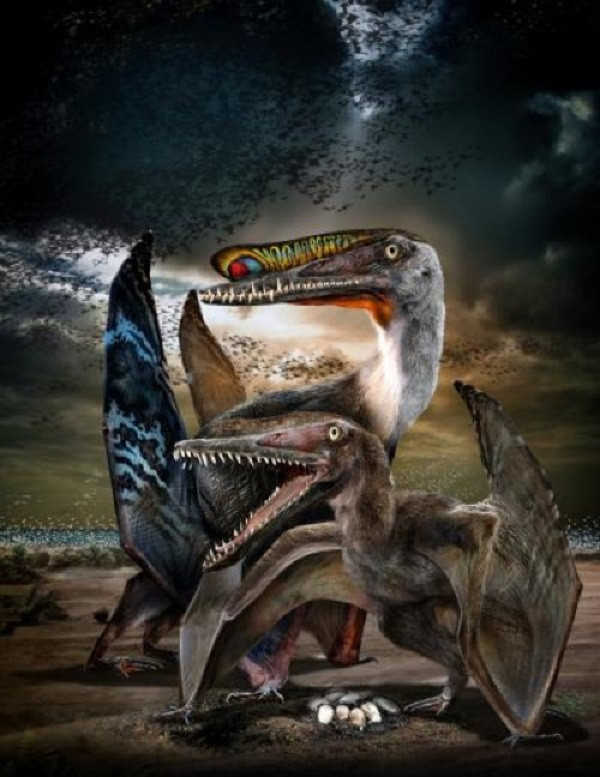3D Pterosaur Eggs Discovered in China's Turpan-Hami Basin

The world's first 3D pterosaur eggs have been discovered among hundreds of fossils in China's Turpan-Hami Basin.
Five eggs were found well preserved and three-dimensional. with some complete specimens, said Xiaolin Wang, of the Chinese Academy of Sciences' Institute of Vertebrate Paleontology and Paleoanthropology.
There has been little information on pterosaurs, with only four flattened eggs previously known to science. The fossil record also showed little information about their populations.
Published in the journal Cell Press, the find represents evidence that pterosaurs, which were flying reptiles with wingspans up to 12m, lived together in colonies.
Fossils included male and female pterosaurs with their eggs: "Five eggs are three-dimensionally preserved, and some are really complete," Wang said. The eggs were pliable with a thin eggshell outside and a soft thick membrane on the inside – similar to modern-day snakes.
The eggs were found in the Turpan-Hami Basin, a fossil-rich area that harbours thousands of bones, including male and female pterosaur skulls.
Findings suggest the creatures were all killed in a huge storm around 120 million years ago, during the Early Cretaceous period.
The fossils and eggs, the researchers say, indicates a nesting site nearby and that the creatures lived in a colony.
"Sites like the one reported here provide further evidence regarding the behaviour and biology of this amazing group of flying reptiles that has no parallel in modern time," they wrote.
"We report here a population of a new sexually dimorphic pterosaur species, with five exceptionally well-preserved three-dimensional eggs, from the Early Cretaceous deposit in northwestern China. About 40 male and female individuals in total were recovered, but the actual number associated might be in the hundreds.
"These fossils shed new light on the reproductive strategy, ontogeny, and behaviour of pterosaurs ... We suggest that this new pterosaur nested in colonies and thus exhibited gregarious behaviour, a possible general trend for at least derived pterodactyloid pterosaurs.
© Copyright IBTimes 2025. All rights reserved.




















